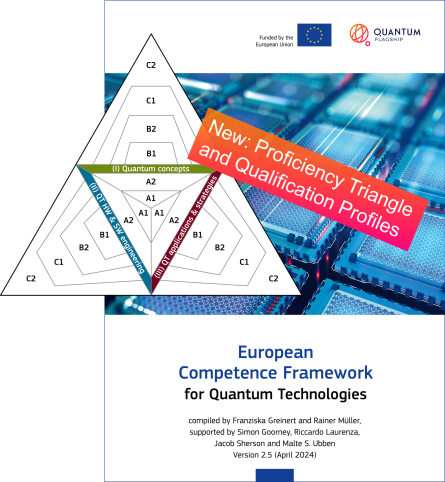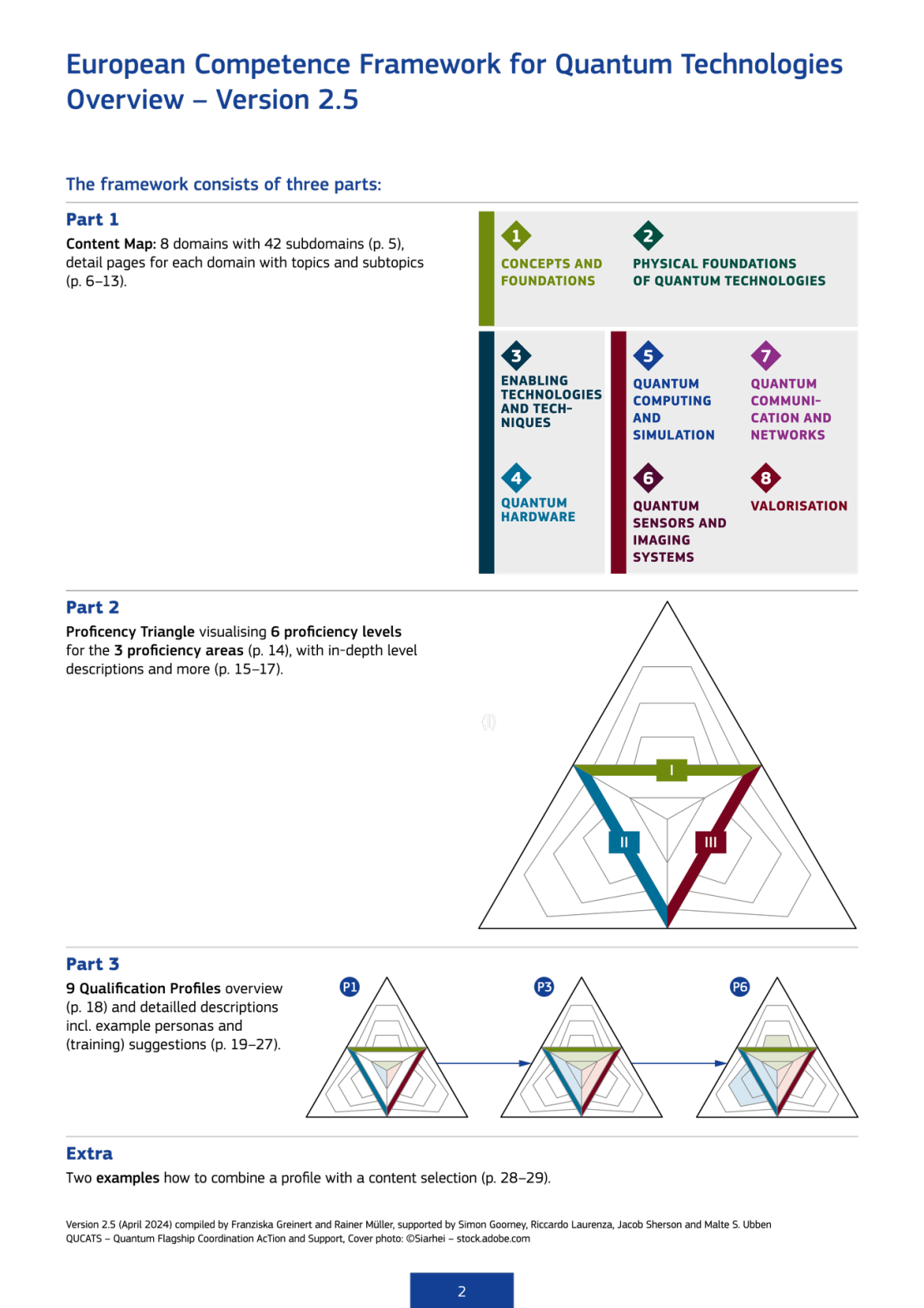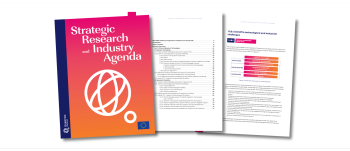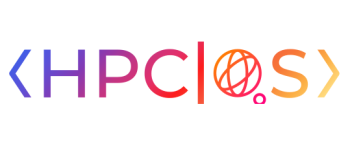

A new update of the European Competence Framework for Quantum Technologies has been published!

The framework is an output of the QUCATS WP4 on workforce development. It is intended to provide a common language for QT training, a tool for planning, mapping and comparing training offers or personal qualifications, and a first step towards standardisation of QT education.
The new version 2.5 consists of three main parts:

The update is based on the analysis of more than 30 interviews with industry representatives. This led to a first draft of qualification profiles, a clustering of roles and qualifications discussed in the interviews. This was complemented by further discussions and expert consultations, as well as a mapping of job vacancies to the profiles. Thus the profiles were refined in an iterative way. An additional paper will report on the details of the update process.
Within the QTEdu CSA, efforts to compile a competence framework for QT have already started in 2020. The process towards version 1.0 is documented in the Methodology and Version History, and the initial iterative study with additional results that go beyond the framework is published in Phys. Rev. Phys. Educ. Res. 19, 010137. Also a beta version of Qualification Profiles has been published within QTEdu. With the new profiles included in the framework document, this beta version is superseded. Last year's update to version 2.0 within QUCATS has been reported in Front. Quantum Sci. Technol., Vol. 2.
Download Competence Framework for QT - Version 2.5 (official EU publication)



